In the current fast-paced world, getting enough sleep is often disregarded and undervalued and its significance, however, cannot be emphasized. Getting enough sleep is key to living a happy and productive life due to its wide range of benefits including strengthening cognitive function and boosting general health.
Quality sleep is critical in preserving both mental and physical health while also improving general productivity. Research done over the years has demonstrated that getting enough good sleep boosts the immune system, elevates mood, and improves cognitive performance.
Additionally, quality sleep is essential for maintaining a healthy metabolism, regulating hormones, and developing emotional forbearance. Individuals who prioritize getting quality sleep report feeling more energized, having better concentration, and facing life’s obstacles head-on.
Keep in mind that quality sleep is not a luxury but a necessity to lead a comfortable and fulfilled life. The difficulty of falling asleep fast can be stressful and upsetting for a lot of individuals.
This problem may be caused by elements such as stress, anxiety, irregular sleeping patterns, and addictive use of technological devices. Sleep’s restorative effects can be hindered by factors such as restlessness, racing thoughts, and difficulties in relaxing.
Being aware of these obstacles and employing simple yet effective measures in practice can help individuals overcome their inability to fall asleep fast. This will open up the possibility of restful, revitalizing sleep.
Join us as we delve into the typical methods of getting a good night’s sleep and learn doable strategies to get back to your original serene state of mind.
1. The Military Method
The military method is a technique designed to help individuals fall asleep within minutes. This unique method involves a series of steps aimed at relaxing the body and clearing the mind.
let us delve into the steps in their order of arrangement.
Relax your Entire Face
When relaxing the face it is crucial to relieve tension from the many facial muscles, such as the forehead, cheeks, and jaw, to relax your complete face. Simple techniques including deep breathing, gentle face massages, and deliberately loosening the muscles in your face can help you attain this.
Individuals can achieve a more tranquil condition that is more favorable in falling asleep by employing these practices that reduce tension and cultivate a sense of serenity.
It is also notable that facial relaxation techniques can help alleviate anxiety while improving health when applied during the day. Adopting these routines in one’s daily life can benefit both their physical and emotional well-being.
Keep in mind, that the face is a crucial location for stress accumulation, and practicing relaxation of its muscles can lead to general relaxation and enhanced sleep quality.
Drop your Shoulders and Hands
To prime the body for rest and sleep, it is crucial that you let go of your hands and shoulders. This process involves consciously releasing shoulder tension and a comfortable resting position for the hands.
By dropping shoulders individuals can alleviate built-up stress and encourage a more relaxed posture by dropping their shoulders, which can make them feel at ease and more prepared for sleep.
Furthermore, letting your hands drop to your sides freely will enhance the relaxation process and the body can receive this straightforward signal to relax and eventually get ready for sleep.
People can intentionally create a physical and mental space that facilitates easier falling asleep by dropping their shoulders and hands. Dropping of shoulders and hands is a physical cue to the body to relax and release the day’s stresses, enabling a calm and tranquil sleep transition.
Exhale and Relax your Chest and Legs
One of the most vital steps in getting your body ready for rest and sleep is to exhale and relax your legs and chest. The steps involve actively letting go of any discomfort in the chest and letting the legs fully relax.
By exhaling slowly and deliberately, individuals may experience a sense of calmness and ease in their chest, which may contribute to a more tranquil state conducive to them falling asleep.
In addition, relaxing the legs is essential for encouraging total physical relaxation. By releasing tension from their legs, individuals can create a sense of comfort and ease which can further prepare the body for a restful sleep.
This is a particularly crucial stage for people who have restlessness or tense legs.
Clear your Mind
Clearing your mind is a crucial part of getting ready for an ideal night’s sleep. It entails letting go of distracting ideas and mental clutter to create a tranquil mental atmosphere for relaxation.
Even though mindfulness and meditation activities are often linked to the idea of freeing the mind, there are also helpful techniques for achieving this condition.
One of the strategies involves mindfulness and nonjudgmental thought observation. Reducing Stress and mental clarity can be achieved by participating in activities like journaling, mindfulness training, meditation, or talking to a friend about your worries.
Physical pursuits like working out, taking up a hobby, or curling up with a good book can also serve as beneficial diversions and promote mental clarity.
People can create a calm mental space that encourages a more seamless transition into good sleep by realizing the advantageous effects of mental clearing and testing with various methods.
Try Repeating the Words “Don’t Think”
Repeating the phrase “Don’t think” for ten seconds, can act as a cognitive exercise to shift attention from racing thoughts to a more peaceful state of mind.
This technique, which has its roots in the idea of cognitive redirection, can be a useful method for those who want to calm down and get ready for bed.
To effectively increase the relaxing impact of saying “Don’t think” is simply breathing slowly and deliberately.
By concentrating on the repeated phrase, individuals find it simple to let go of bothersome thoughts and mental distractions, which later promote a more tranquil mental environment that is suitable for falling asleep.
By adding this practice to their nightly routine, they can gain a valuable tool for controlling their racing thoughts and encouraging mental calmness, enhancing their sleep quality.
2. Create a Calm Environment
Fostering relaxation and getting the body and mind ready for sleep require a peaceful sleeping environment. The brain is alerted to wind down immediately the lighting in the bedroom is dimmed, and possible disruptions are minimized when noise levels are controlled.
Physical comfort can be linked to having supportive pillows and a high-quality mattress, as well as comfortable bedding straightforward yet powerful techniques that may help make a big difference in having a more restful and revitalizing sleep experience.
These straightforward yet effective tips can make a big difference in having a more restful and revitalizing sleep experience.
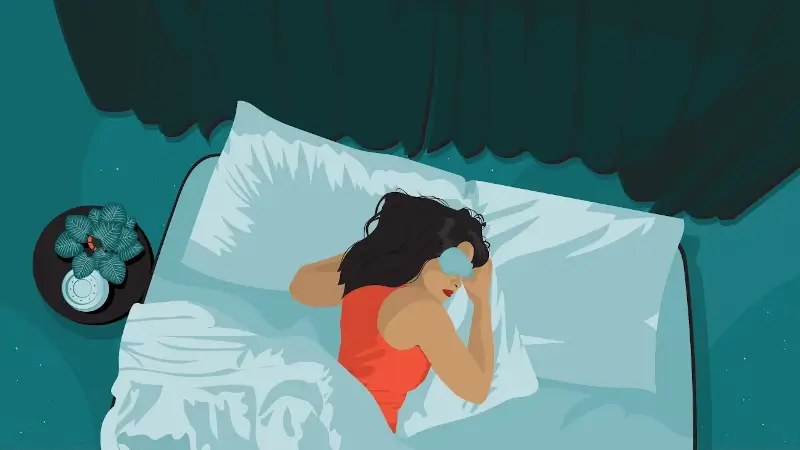
3. Relax your Body
One of the most essential methods to be prepared for a good night’s sleep is to relax your body. Yoga or gentle stretching can assist you in decompressing and becoming more relaxed.
Exercises involving deep breathing can help relax the mind and get the body ready for sleep. To relax your muscles and assist the body in recognizing when it is time to wind down, ensure before going to bed you take a warm bath or shower.
To further aid in body and mind relaxation is the use of imaging or visualization techniques to conjure up serene scenes or scenarios.By incorporating these techniques, individuals can efficiently decompress and be ready for a restorative sleep.

4. Control your Breathing
The most effective way to encourage relaxation and get your body ready for sleep is to control your breathing. To achieve this we delve into one essential method known as Diaphragmatic breathing, which involves taking slow, deep breaths that activate the diaphragm.
In addition to reducing anxiety, the breathing technique stimulates the parasympathetic nervous system and boosts relaxation and the ease of going to sleep.
People who use these breathing techniques as part of their nightly routine can successfully relax their bodies and minds, which opens the door to a more tranquil and restful sleep.
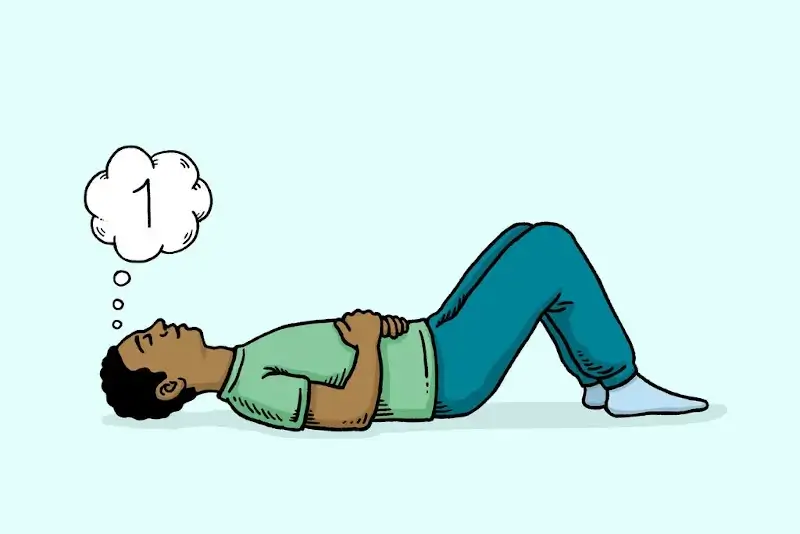
5. Visualize a Peaceful Scene
A powerful technique to calm the mind and promote better sleep is simply visualizing a peaceful serene mental image of the mountains or even the beach.
By conjuring up these serene mental images, individuals can create a sense of relaxation and ease thus helping divert focus from everyday stress which makes it easier to fall asleep quietly.
To improve this method, individuals can also add relaxing noises, such as soft waves or rustling foliage, to heighten the vision experience.

6. Use Progressive Muscle Relaxation
Progressive Muscle Relaxation (PMR) is a highly effective technique that systematically tenses and then releases various bodily muscle groups.
The technique facilitates deep relaxation and eases bodily tension, which helps one fall asleep more easily.
Individuals can become more conscious of their physical feelings and develop the ability to recognize and release tension by concentrating on each muscle group. Some forms of chronic pain can be treated using PMR as discovered alongside stress, anxiety, and sleeplessness.
PMR was developed by American physician Edmund Jacobson in the 1920s, and it has gained recognition as a secure and reliable substitute for pharmacological therapies for a range of ailments.
You can simply practice PMR by gradually working through muscle contractions using guided scripts that are available online or in therapeutic texts.
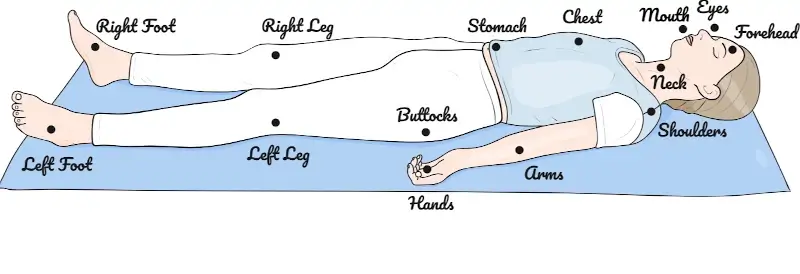
7. Practice Mindfulness Meditation
Mindfulness Meditation is a mental training exercise that individuals use to educate their minds to become calmer, let go of negativity, and slow down their racing thoughts.
The technique blends mindfulness, which focuses entirely on “the now” to accept and notice thoughts, feelings, and sensations without passing judgment, with meditation.
Studies have proven the beneficial effects of mindfulness meditation on sleep quality, and meta-analysis and systematic reviews have revealed the practice’s efficacy in enhancing mental and general well-being.
To help people become more conscious of their thoughts, feelings, and bodily sensations, mindfulness meditation encompasses practices like yoga, breathing exercises, and guided teachings.
For individuals to develop mental peace, lower their stress levels, and improve their capacity to achieve restful sleep, they must incorporate mindfulness meditation on a regular basis.
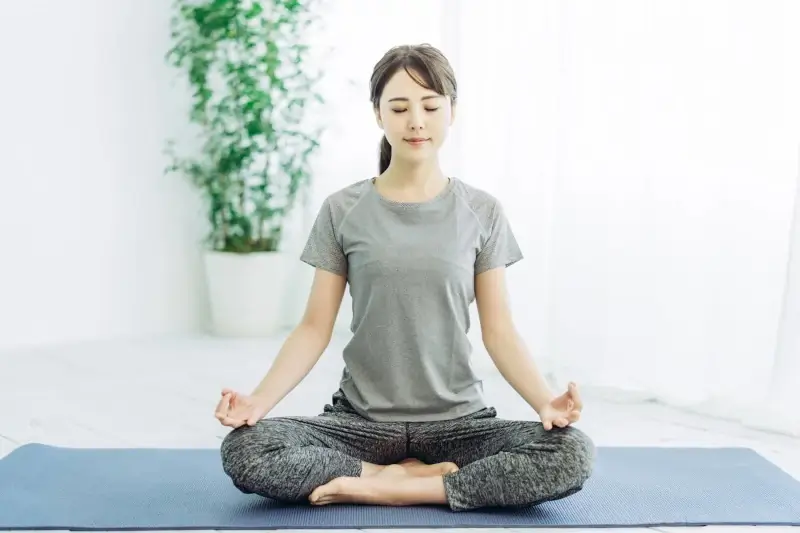
8. Try the 4-7-8 Breathing Technique
Dr. Andrew Weil’s 4-7-8 breathing technique is an easy-to-use yet powerful way to help you fall asleep swiftly and have a better night’s sleep. The method is based on yoga breathing techniques and is especially helpful to those who struggle to fall asleep as it aims to reduce stress and anxiety.
The technique entails four counts of inhalation, seven counts of holding the breath, and eight counts of exhalation. The breathing pattern has proven to eventually encourage a peaceful night’s rest by lowering heart rate, calming the mind, and reducing mental activity.
To facilitate a comfortable transition into sleep, the 4-7-8 breathing technique can be practiced either before bedtime or during nighttime awakenings since it is proven to help manage tension and anxiety.
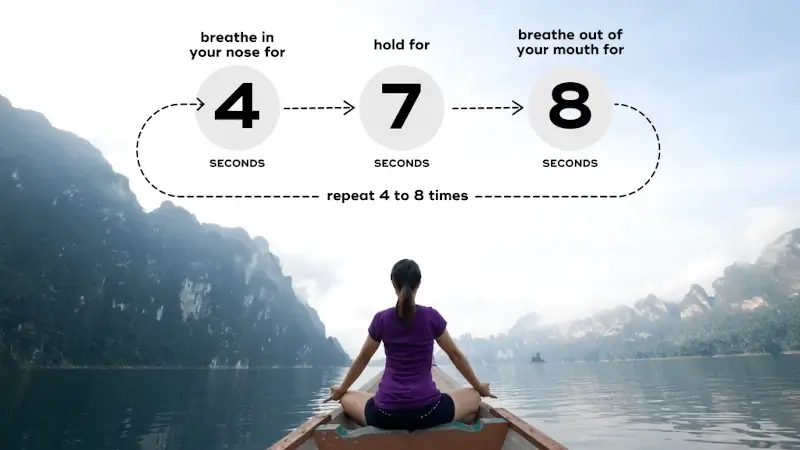
9. Use Aromatherapy
Aromatherapy is a natural way of fostering relaxation and enhancing the quality of your sleep. By using essential oils like lavender, chamomile, jasmine, and sandalwood, one may generate a relaxing and tranquil atmosphere that promotes sound sleep.
The essential oils have a reputation and are well known for their relaxing and stress-relieving, which can lessen tension while improving serenity.
Aromatherapy can be incorporated into sleep rituals by using a pillow spray filled with calming scents, diffusing essential oils, or adding a few drops to a warm bath.
Studies have shown that aromatherapy has a positive impact on both general well-being and sleep patterns.
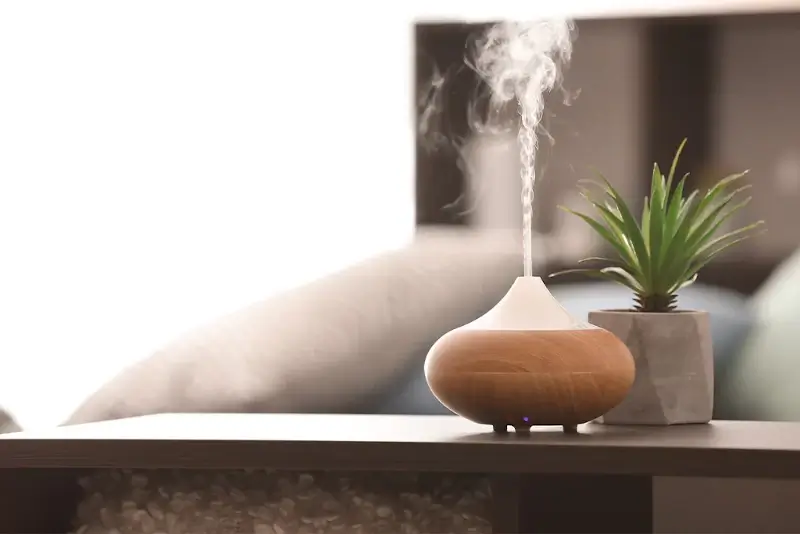
10. Limit Stimulants Before Bed
Another key factor in ensuring a peaceful sleep is simply limiting stimulants before bed. Stimulants like caffeine, nicotine, and other pharmaceuticals can interfere with the body’s normal circadian rhythm, thus making it harder for one to fall asleep and maintain sleep.
Strong stimulants like caffeine, which is frequently included in coffee, tea, and energy drinks, can delay the onset of sleep and lower the quality of sleep that is obtained.
In addition, several drugs may have a similar effect, particularly those that contain stimulant features. A few hours before going to bed, individuals ought to contemplate cutting back on or giving up stimulants to improve the quality of their sleep, thus facilitating the body’s descent into a relaxed state and helping them get ready for a good night’s sleep.

11. Establish a Bedtime Routine
Creating a bedtime routine is a basic tactic to enhance the quality of sleep and encourage calmness before bed. The regular bedtime routine aids in controlling the sleep-wake cycle by allowing the body to know when it’s time to wind down and get prepared to sleep.
Also, the regimen involves a series of activities including reading a book, having a warm bath, doing light stretching or yoga, or just relaxing to soothing music.
By frequently partaking in these relaxing activities before bed individuals can establish a quiet and sleep-friendly environment. Further, Establishing a sleep routine is helped by refraining from stimulating activities before bed, like using electronics or doing vigorous physical activity.

Conclusion
In the quest for restful nights and revitalizing sleep, a blend of these proven methods can open the door to a calm night’s sleep.
By combining these straightforward but efficient techniques, individuals can unlock the power for better sleep and embrace a newfound sense of well-being.
